Vivint home security reviews


Vivint offers a ton of smart home features alongside its security functions, but its mostly proprietary equipment won’t work elsewhere. You can’t DIY it, and gear and monitoring costs can be steep. But if you want a high-end system with solid customer service, check Vivint out.
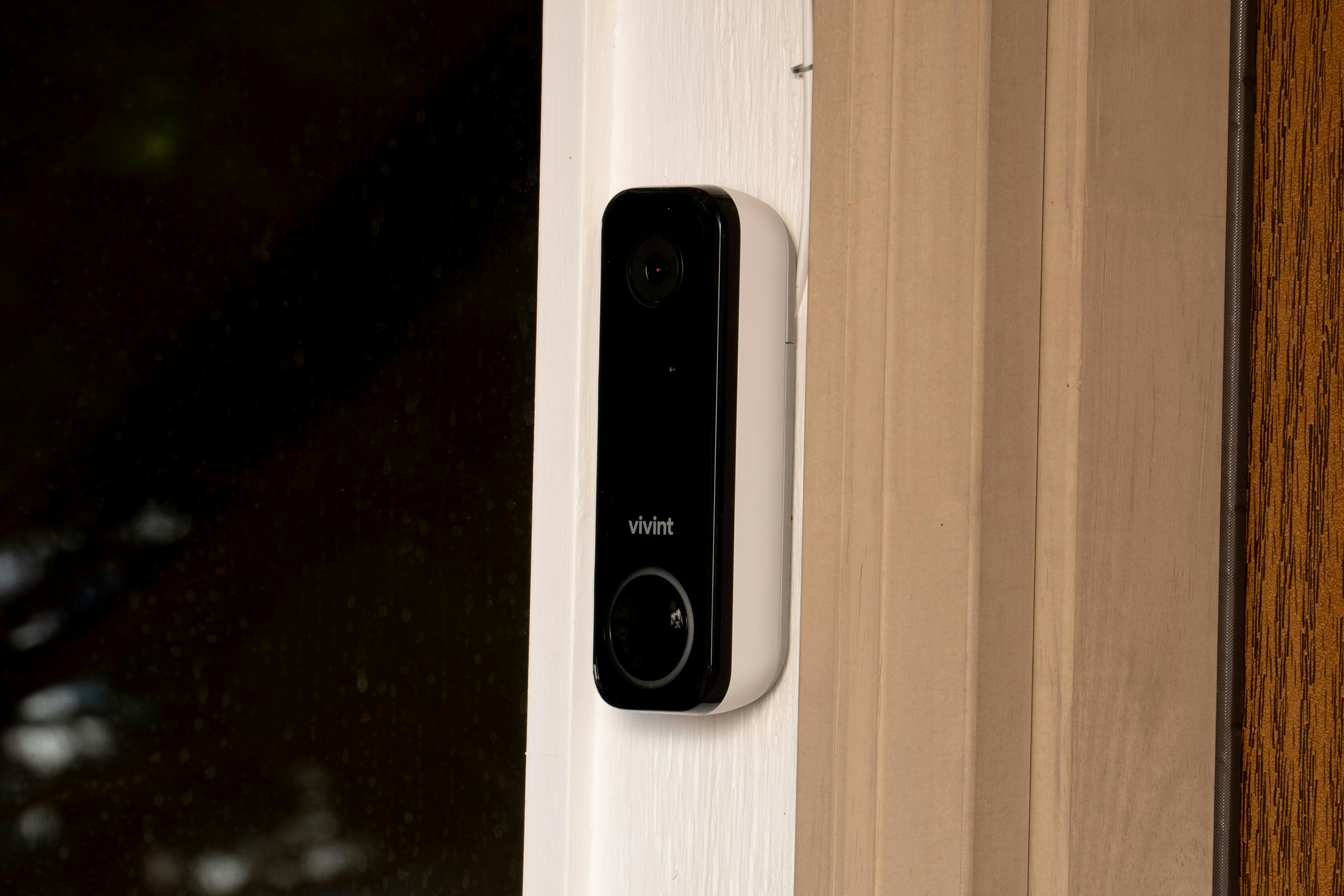
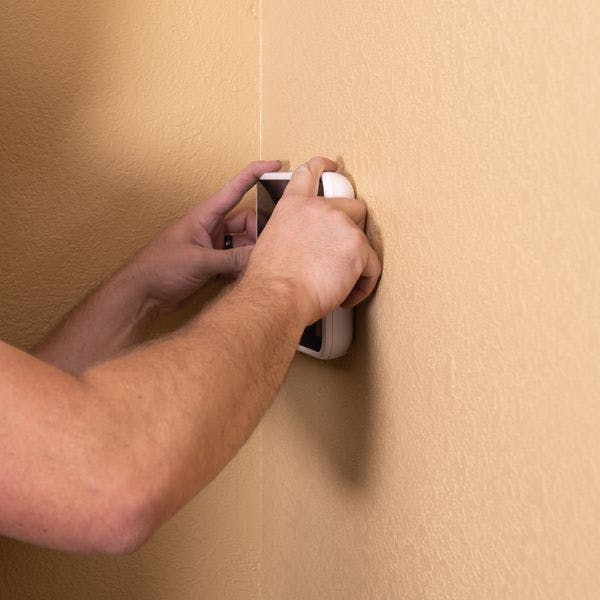
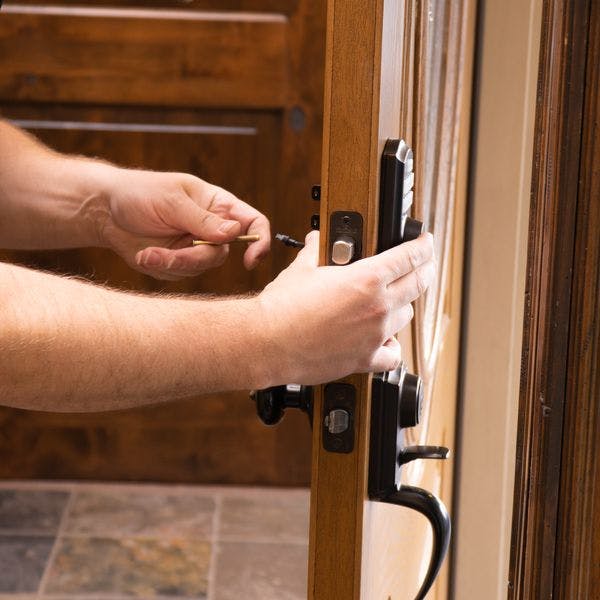
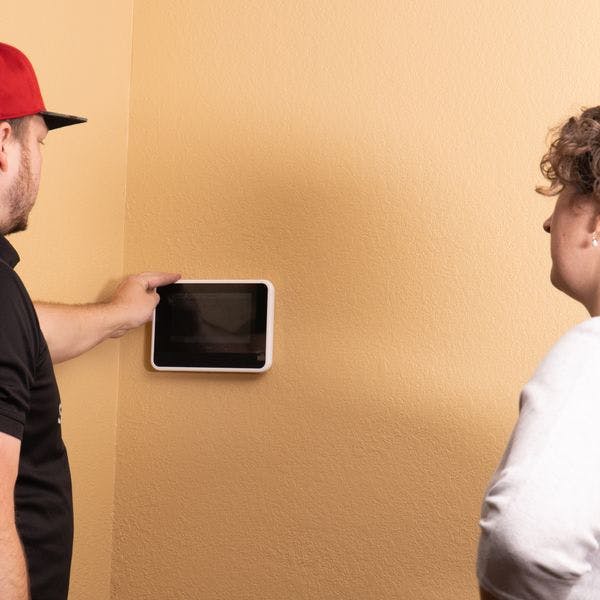
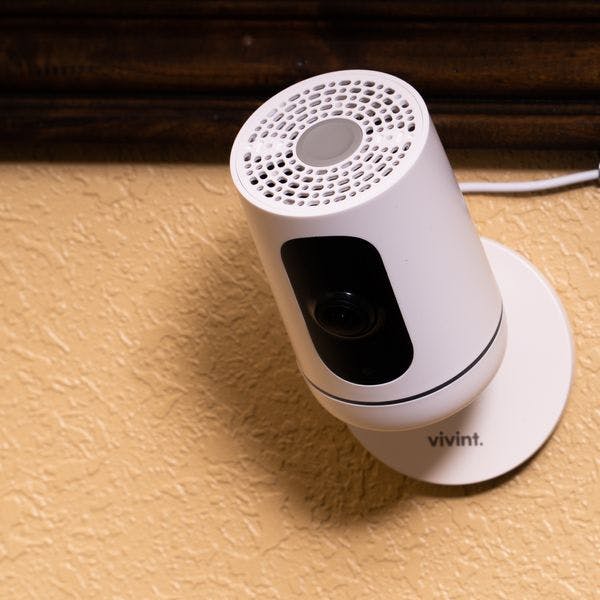
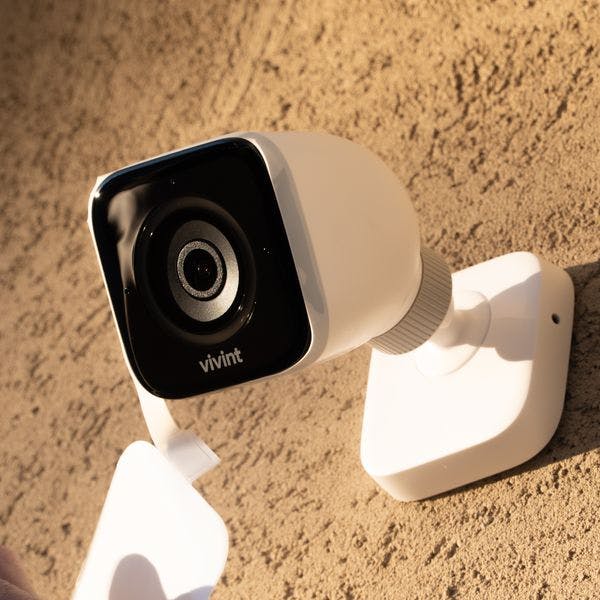
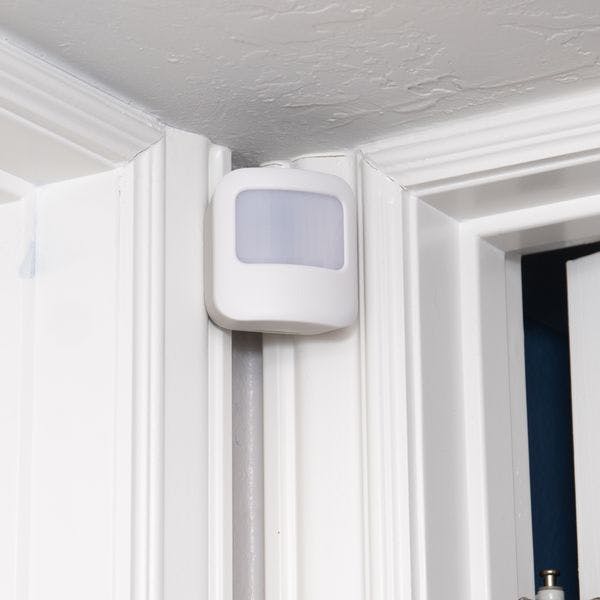
We initially tested a Vivint system in our home for three months. We ordered a ton of equipment (courtesy of Vivint), so we could test just about everything. The result was a Fort Knox-like security system that’s above and beyond what most customers purchase, but it helped us fully evaluate all of Vivint’s many bells and whistles. Our system is still live, so we’ll be adding to this review as we discover new gear and features.
Almost all of Vivint’s equipment is proprietary, so you won’t find it anywhere else. It’s also some of the highest-quality gear we’ve tested. It all plays nicely with the app and control panel, which is helpful for all the smart home features it offers. Our favorite is having our garage door open, doors unlock, and the heat come on automatically when we get home at the end of the day. But it also means Vivint has limited capability to integrate with other systems. You can’t add cameras from any other brand, for example. And if you want a system that works with an Apple HomeKit, look elsewhere.
The non-proprietary gear Vivint uses includes Kwikset smart locks, an optional Google Nest thermostat (though Vivint also offers its own), and the myQ garage door controller. We didn’t test the Nest thermostat (they were out of them when we ordered), but the Kwikset locks worked really well with the Vivint app.
The myQ garage door controller… less so. We liked that it flashed and beeped to warn children and pets of an impending closing door. But you have to use a separate app for this feature. In practice, we usually skipped the app and just used our old remotes because it was faster. We liked that we got phone notifications no matter how we opened or closed the door, though.
Vivint is great at letting you customize your equipment order, provided you’re willing to spend at least $600. Unfortunately, the company doesn’t clearly advertise any equipment packages—or pricing—on its website, and you have to call in to order.
We were able to test an extensive list of Vivint smart home gear, including:
Mostly, the equipment worked excellently. Once installed, it was easy to customize settings—like adjusting camera sensitivity to avoid false alerts—and then forget about it. That said, we had a few hiccups. Our motion sensor plummeted onto a tile floor and came apart after it was installed with adhesive alone. We were able to put it back together and get a technician to come back and drill it into place, and it worked fine. That’s a darn sturdy device!
On another occasion, one of our outdoor cameras stopped working, but we didn’t notice for a few days because we got no notifications and were able to seamlessly arm the system without any warnings. The idea that it could be possible for someone to disable one of our cameras without our knowledge was… disturbing.
Vivint compatibility with voice assistants
| Voice assistant | Compatible? |
|---|---|
| Alexa | Yes |
| Google Home | Yes |
| Siri | No |
| Bixby | No |
| Cortana | No |
Vivint compatibility with climate control systems
| Climate system | Compatible? |
|---|---|
| Honeywell | No |
| Nest | Yes |
| ecobee | No |
| Wyze | No |
| Amazon | No |
Vivint compatibility with lighting control systems
| Lighting system | Compatible? |
|---|---|
| GE | No |
| Leviton | No |
| Philips Hue | No |
| Enerwave | No |
| GoControl | No |
Vivint compatibility with smart door locks
| Smart door lock | Compatible? |
|---|---|
| Kwikset | Yes |
| Yale | No |
| August | No |
| Schlage | No |
| Level Lock | No |
Vivint is one of the highest-cost home security systems on the market. Meanwhile, costs aren’t clear until you speak with a sales representative, and even then, you’ll get an estimate of what your final bill will be. Our estimate was accurate to within a few dollars, but we’d like more transparency from the start. The only prices you can find on the Vivint website are installation costs—a reasonable $99—and monthly monitoring rates, which start at a pricey $30 and climb closer to $50 if you have any cameras. For comparison, many competitors offer professional monitoring for well under $30 per month.
Equipment costs are also high for the industry. Each camera costs around $70 more than competitors like Ring. While most home security companies have basic packages priced in the $100–$300 range, you’ll buy a minimum of $600 of gear with Vivint.
If you’re looking for a one-stop shop for home security and smart home technology and don’t want to worry about setup, Vivint could be worth the price tag. But there are a ton of much cheaper DIY options out there, such as SimpliSafe and Frontpoint, that work hard to make self-installation and troubleshooting a breeze. Check those out before you pull the trigger with Vivint.
Although Vivint doesn’t require a contract, you’ll have to buy all your gear up front at Vivint’s sky-high prices to avoid a commitment. All the equipment you buy outright is now yours: you don’t have to give it back if you cancel. The bad news is that you can’t use most of your gear with any other security company’s smart home monitoring services. The way we see it, most people willing to drop $600 on equipment will want to use it for at least a year anyway, so draining your piggy bank to avoid a contract probably isn’t worth it.
Finally, we should mention that if you want a comprehensive Vivint security and smart home setup, you might run up a large equipment bill like we did. If you have more than $4,000 of gear in your system (we had just over that amount), Vivint adds around $30 to your monthly monitoring as a “Large System Fee.” But you might be able to negotiate your way out of that.
Vivint doesn’t offer DIY installation, so a technician will install your system for you. While this generally translates to an easy installation experience, there might be potential hiccups. For us, installation took longer than it should have. We ordered a lot more gear and asked a lot more questions than the average customer, but Vivint’s schedulers gave us the standard appointment length, which meant that even after six hours, installation wasn’t complete, and our tech had to schedule a follow-up.
Finding power outlets and needing to run wires through walls was another challenge we didn’t know we’d need to face. That limited where we could install our Smart Hub and left neatly stapled but visible wires running to some of our cameras, which wasn’t ideal.
Once installed, using the Vivint SmartHub control panel and app is intuitive, and you can use Vivint Smart Home with Google Home or Alexa (but not Apple Homekit). It’s easy to see at a glance whether all your doors and windows are secure and what your home’s temperature is. However, the control panel and app each have a few different functions that the other doesn’t, which makes the system less convenient to use.
On the panel, you can watch live feeds, but if you want to rewind a few seconds back, you’ll need to use the app or wait until the entire clip finishes recording and pops up on the “Events” list. Changing your preferences for each camera (like movement sensitivity and monitoring area) is also done in the app. But if you want to check on the status of, say, the water sensor underneath your washing machine, you won’t be able to find that device on the app. You’ll have to go to the control panel.
It’s easy to set up custom rules and actions with the app, but we ran into a snag with one of the most important smart home features: automatic temperature adjustment when we leave home. The system decides whether you’re home based on your motion detector, which didn’t work well for us. On winter days when we worked from home, we’d find ourselves shivering away at our desks because we hadn’t walked by the motion sensor in the hallway for a while.
Perhaps that’s a sign we should be taking more coffee breaks throughout the day, but it made maximizing our energy bill savings challenging. We ended up setting temperatures based on a daily schedule, then adjusting manually as needed.
Unfortunately, there was enough lag for phone alerts and camera footage that made it hard to know exactly what was happening around our home in real time. We often caught only the last moment of a delivery person driving off or having to rewind 10-second-old footage to figure out why a camera detected a person on the property. The myQ garage door controller alerts often came through with the wrong timestamp, too. While these things seem small on a daily basis, timing matters in a true emergency.
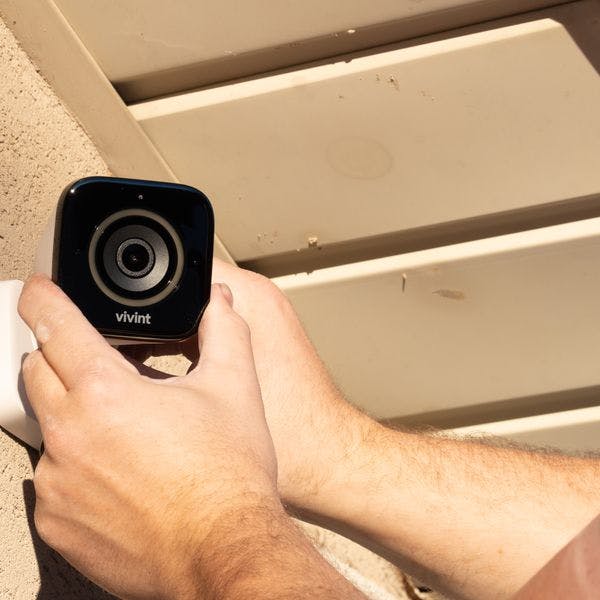
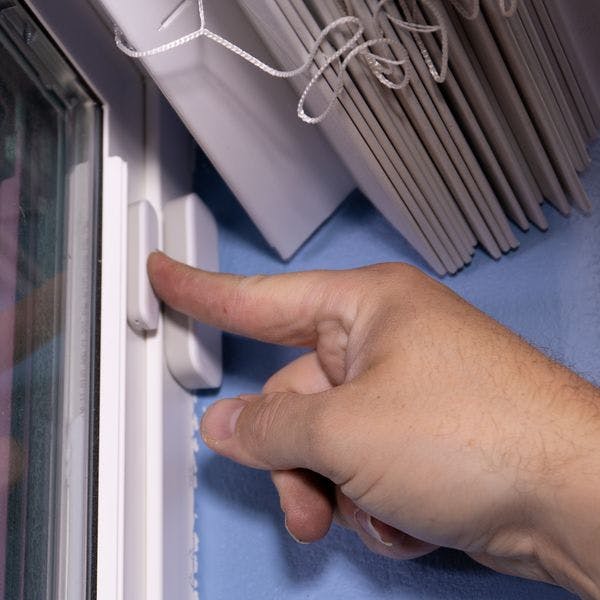
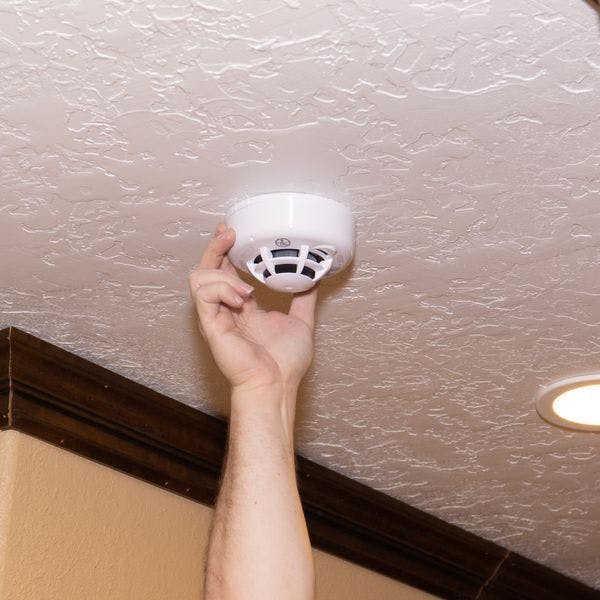
Vivint requires professional monitoring to use its equipment, and it costs more than most of its competitors. But while Vivint doesn’t allow you to monitor your home yourself, it does offer robust support that gives you the most out of your system.
Not all home security monitoring services are created equal, and Vivint offers a few standouts that gave us some peace of mind. For one, Vivint doesn’t outsource its professional monitoring—it has its own centers. You’ll also see a lot of direct benefits: automated texts in the event that a device is offline or its battery is running low, multiple methods of contacting you if your alarm goes off, and 30 days of video storage in the cloud, to name a few.
Overall, Vivint’s monitoring services are solid. What happens when an alarm goes off varies, but generally, you can expect a representative to try to contact you via the Vivint Smart Hub and by phone before calling any authorities. When this happens, you’ll need to provide a safeword or phrase to verify your identity. In the case of a false alarm, if you disarm your system before Vivint can contact you, you’re usually good to go. Home security newbies will love the way Vivint clearly outlines what happens when an alarm goes off in your home on its website.
Generally, Vivint’s customer service is pretty good. We weren’t surprised to learn that Vivint has a four-star average review rating on Trustpilot, which is about average for a security company. But because Vivint costs more than most other companies, we were hoping for a five-star experience.
After experiencing our installation hiccups, we would like to see better communication between Vivint headquarters, its technicians, and its customers when it comes to scheduling, technical requirements, and equipment capabilities. We felt under-educated on what to expect during installation, for example, which led to a longer and more frustrating process.
Our issues aside, you can generally expect a positive customer experience. Once your system is installed, all defective gear is covered under a Vivint Service Plan included in every Vivint plan—which we also got the chance to test. Under the plan, you won’t have to fix or repair gear that’s defective or damaged by normal wear and tear. That promise lasts as long as you’re a customer, but after your first 120 days of service, you may have to pay a technician fee if you need in-person assistance.
For us, one of our cameras stopped connecting after working just fine for a couple of months. Troubleshooting with tech support revealed the likely suspect, and a new part was on its way within seven business days.
Our customer service and troubleshooting interactions were positive, whether we were using self-help resources in the app, chatting online, or talking over the phone. We spent about 2.5 hours troubleshooting our malfunctioning camera—first on our own with the app, then over chat, then over the phone when we lost connection to the app. Each tech was able to easily pick up where the last one left off and help us investigate further.
We didn’t have to wait on hold for more than a couple of minutes, even when being transferred across departments to have our billing questions answered. However, we were a little put off by being asked to refer a friend by each technician—before our issue or question was resolved. It’s a small thing, but it felt unearned and made the interaction seem less genuine.
Our best experience was with Vivint’s loyalty department. We called with questions about our bill, which provides little transparency into individual charges. As a loyalty specialist talked us through each charge, they offered to cut our bill nearly in half in exchange for a six-month commitment, which was great. And they did it all without pressure tactics.
To help protect your personal information, Vivint uses two-factor authentication when you create an account. You’ll use this password to access your billing information and other account details. But on the daily, you’ll arm and disarm your system on the control panel using a PIN. You won’t need your PIN much for the app, so make sure your phone is protected with a password or other login credentials in case someone gets a hold of it.
According to its privacy policy, Vivint collects this information:
Vivint devices collect this data:
If your Vivint system includes components from third-party companies, such as a myQ garage door opener, these other companies may collect and share usage data with Vivint. Vivint doesn’t sell your data, but it may share it with affiliate companies to sell you products or services Vivint thinks you might want. And its marketing partners use cookies and other technologies to follow your activity online to market to you. Finally, Vivint uses anonymous data to learn about how you use its products and services so it can improve them.
While all this sounds like a lot, it’s all pretty standard for a tech company these days. Vivint hasn’t experienced data breaches resulting from hacking, but some individual security systems have been compromised in certain cases. For example, Vivint’s cancelation policy has resulted in previous homeowners retaining camera access to a new homeowner’s system after handing over keys to the home. It looks like the issue has been resolved, but it’s something to watch out for if you buy a house with an existing Vivint system installed.